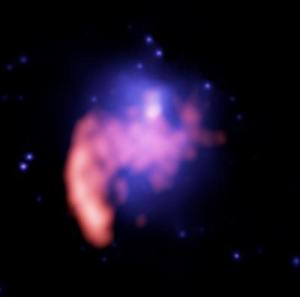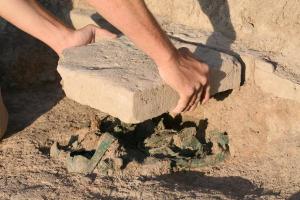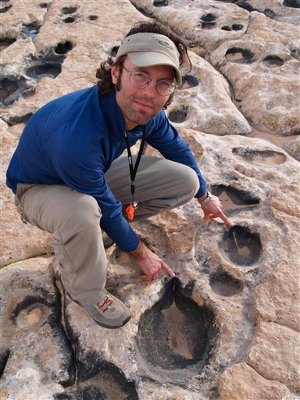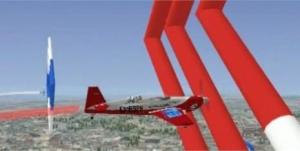A team of scientists, including astronomers from the Naval Research Laboratory (NRL), have detected long wavelength radio emission from a colliding, massive galaxy cluster which, surprisingly, is not detected at the shorter wavelengths typically seen in these objects.

© Radio (NCRA/GMRT/INAF/G.Brunetti et al.); X-ray (NASA/CXC/INAF/S.Giacintucci et al.)Superimposed false-color images of the galaxy cluster A521. The blue color represents hot gas typical of many galaxy clusters detected by the Chandra X-ray Observatory. The shape of the X-ray emission indicates that the cluster has undergone a recent collision or "merger event" that could generate turbulent waves. The red represents radio emission at 125 cm wavelength. The bright radio source on the lower left periphery of the X-ray gas is a separate source. The region of radio emission generated by turbulent waves is located at the center of the cluster, where the colors overlap.
The discovery implies that existing radio telescopes have missed a large population of these colliding objects. It also provides an important confirmation of the theoretical prediction that colliding galaxy clusters accelerate electrons and other particles to very high energies through the process of turbulent waves. The team revealed their findings in the October 16, 2008 edition of
Nature.
This new population of objects is most easily detected at long wavelengths. Professor Greg Taylor of the University of New Mexico and scientific director of the Long Wavelength Array (LWA) points out, "This result is just the tip of the iceberg. When an emerging suite of much more powerful low frequency telescopes, including the LWA in New Mexico, turn their views to the cosmos, the sky will 'light up' with hundreds or even thousands of colliding galaxy clusters." NRL has played a key role in promoting the development of this generation of new instruments and is currently involved with the development of the LWA. NRL radio astronomer and LWA Project Scientist Namir Kassim says "Our discovery of a previously hidden class of low frequency cluster-radio sources is particularly important since the study of galaxy clusters was a primary motivation for development of the LWA."



